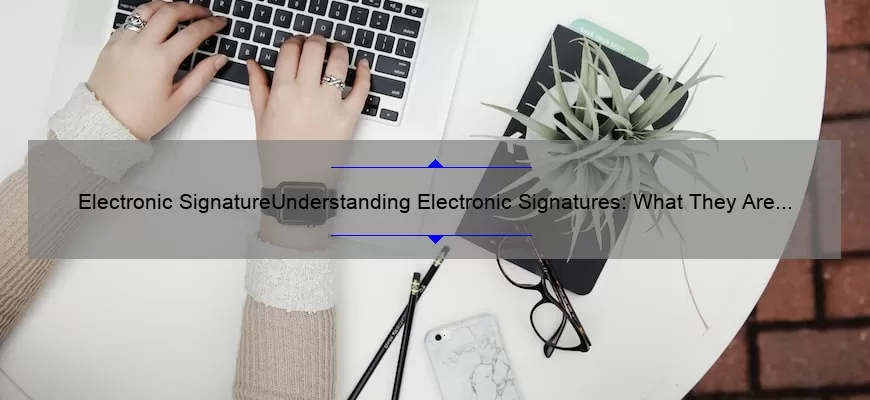What is an Electronic Signature?
An electronic signature, or e-signature, is an electronic form of a handwritten signature used to sign documents digitally and legally bind the signer to the contents of the document. It is a secure way to identify the signer and to have a record of the signer’s consent to the document.
An electronic signature is similar to a handwritten signature in that it verifies the agreement of the signer to the terms of the document. However, it is much more secure, as it is difficult to forge and can contain additional information about the signer, such as a date and time stamp. Additionally, electronic signatures are easier to use than handwritten signatures, as they can be completed quickly and conveniently online.
Whether you’re a business signing a new contract or an individual signing a loan agreement,
How Does an Electronic Signature Work?
An electronic signature, or eSignature, is an electronic representation of a signature affixed to a document as a means of verifying its authenticity. It is typically used in place of a handwritten signature, and is used in many different contexts.
The most common type of electronic signature is an image of a signature, which is created by digitally scanning a physical signature, or by recreating one with a stylus or finger on a tablet or smartphone. This type of eSignature can be used to verify the identity of the signer, and is used in a variety of settings from legal contracts to purchasing goods and services online.
Another type of electronic signature is the cryptographic signature, which is created by using cryptographic techniques to generate a unique digital signature for each document. This type of eSignature is used to prove that the
What Are the Benefits of Electronic Signatures?
The advent of technology has changed the way that business is conducted, and electronic signatures (or eSignatures) are a perfect example. An eSignature is an electronic method of signing a document, and it is quickly becoming a cornerstone of the workplace. There are numerous benefits that come with using this type of digital signing, and they include the following:
Convenience: Electronic signatures are incredibly convenient. Instead of having to print, sign, and scan documents, all that is required is a few clicks, and the document is ready to be sent. This can save time and money, as well as streamline operations.
Security: Electronic signatures are also incredibly secure. Documents are encrypted and digitally signed, which means that the identity of the signer is verified, and the document itself is secure from tampering.
Is an Electronic Signature Legally Binding?
Electronic signatures, or e-signatures, are becoming increasingly popular in the modern age, and are used for a variety of different purposes. But is an electronic signature legally binding? The answer to this question depends upon the country and the context in which the signature is used.
In the United States, the federal government has passed the Electronic Signatures in Global and National Commerce Act (ESIGN), which makes electronic signatures legally binding in most circumstances. ESIGN ensures that a legally-binding signature can be obtained using an electronic device, such as a computer, smartphone, or tablet.
In the European Union, the Electronic Identification, Authentication and Trust Services Regulation (eIDAS) makes electronic signatures legally binding. eIDAS also ensures that a legally-binding signature can be obtained using an electronic device.
In






